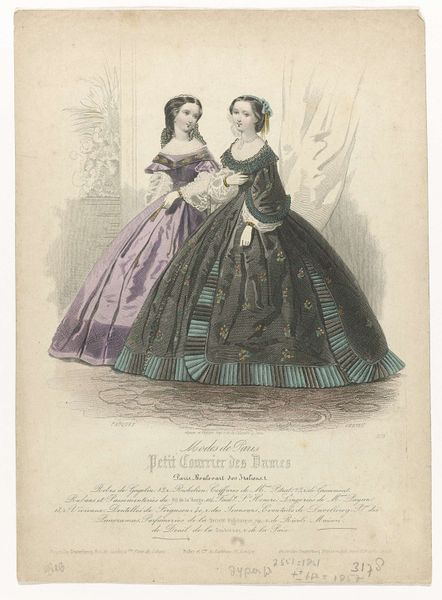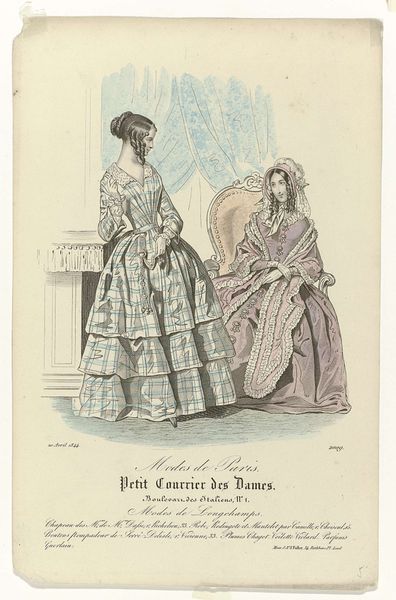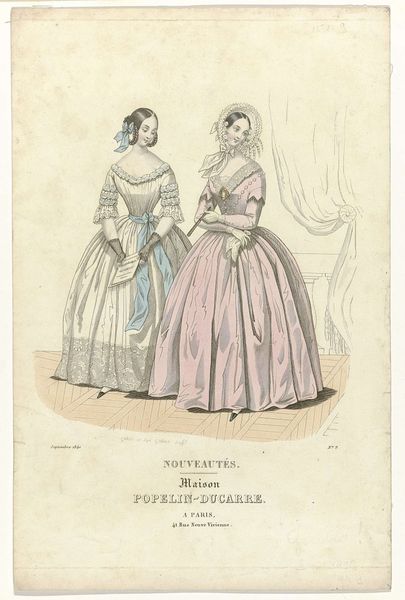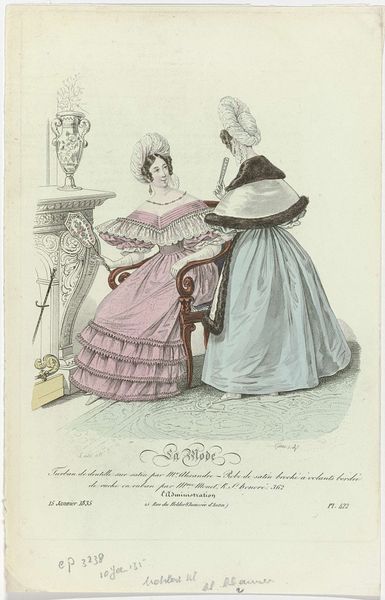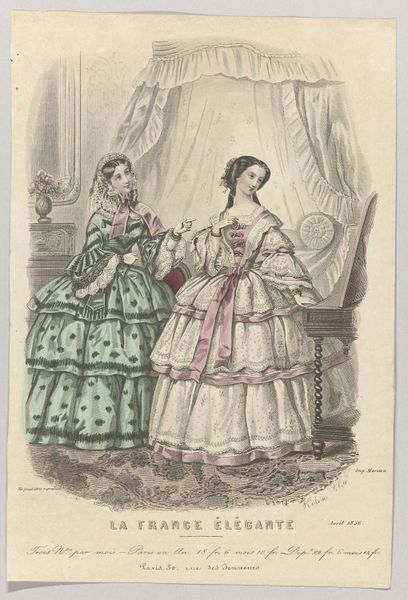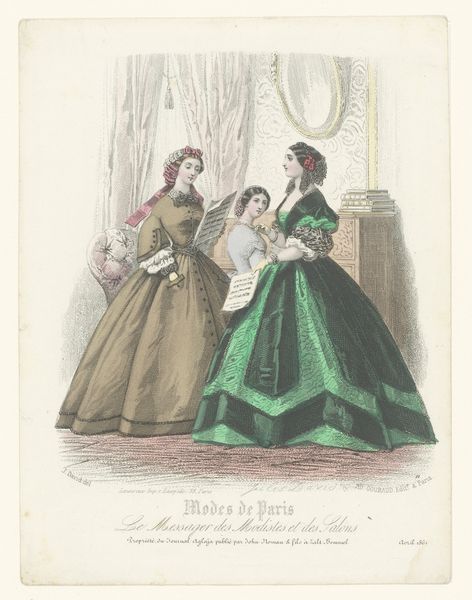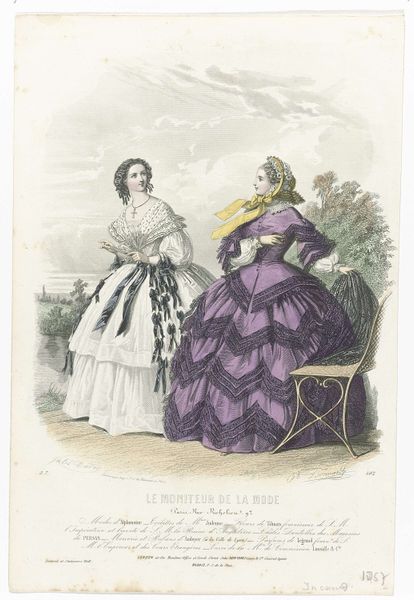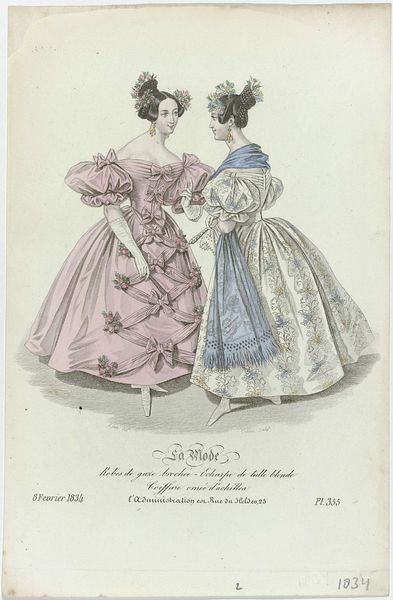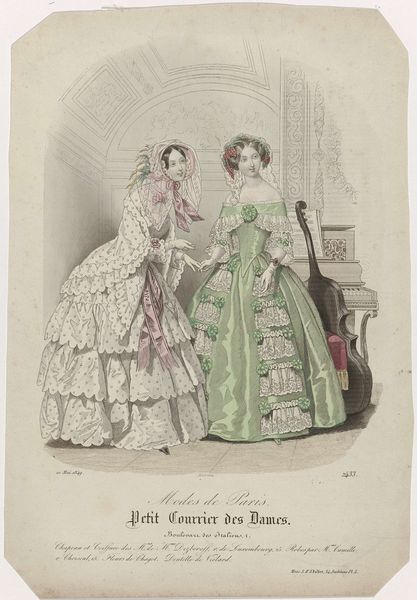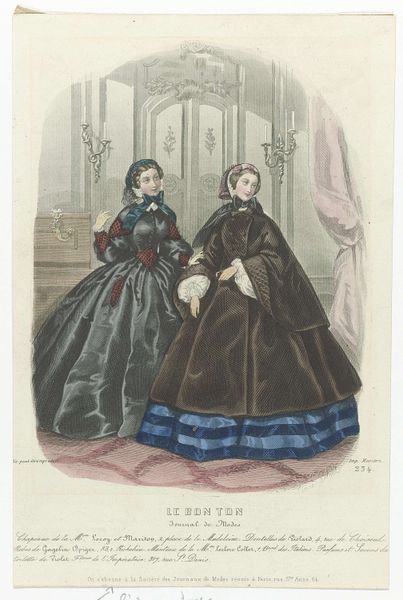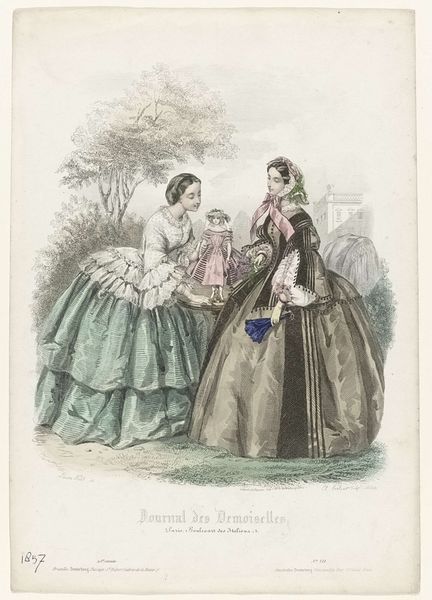
Petit Courrier des Dames, 15 juin1849, No. 2441 : Chapeau et Coiffur (...) 1849
0:00
0:00
#
portrait
# print
#
figuration
#
romanticism
#
genre-painting
#
dress
Dimensions: height 266 mm, width 188 mm
Copyright: Rijks Museum: Open Domain
Curator: This delightful print, "Petit Courrier des Dames," dated 1849, showcases the latest fashions. It’s credited to Florensa de Closménil, a designer of the era. The original would have been a magazine plate offering insight into the sartorial landscape. Editor: My immediate reaction is to its gentle formality. The colour palette feels almost muted, demure even, despite the grandness of the gowns. Curator: Indeed. From a material perspective, we can see the emphasis on layered fabrics. The sheer volume of the skirts, the detailing on the lace... imagine the labor involved in producing these items! Consider the specialized knowledge needed for dying textiles and assembling complex garments in mid-19th century ateliers. Editor: And the symbols they project. Think about the colour choices - that pastel pink contrasting with the stark black shawl on one figure suggests innocence paired with, perhaps, a hint of mystery. Those intricate floral embellishments trailing down her dress seem like echoes of Botticelli, of rebirth. Curator: Good point. Moreover, the romantic styling would demand access to international trade networks to source items such as silk. Who wore these dresses, and how often, implies access to extensive financial resources. It makes me wonder about the social rituals that were connected to the material culture on display here. Editor: To me, it is a very deliberate statement of feminine decorum and domestic power, especially if it hung in a home—or perhaps was carried among friends and peers. Consider its implications beyond mere trendiness. What was conveyed within these elite social circles by the way women literally draped themselves? Curator: So true; seeing how luxury becomes woven into a narrative of class, identity, and consumption is really fascinating in light of the history of industrialisation. We often fail to notice the sheer work that luxury requires. Editor: By interpreting not just *what* we see here, but also what these images signified socially to viewers at the time, we arrive at something deeper. A window into unspoken longings, societal pressures and so much more.
Comments
No comments
Be the first to comment and join the conversation on the ultimate creative platform.
